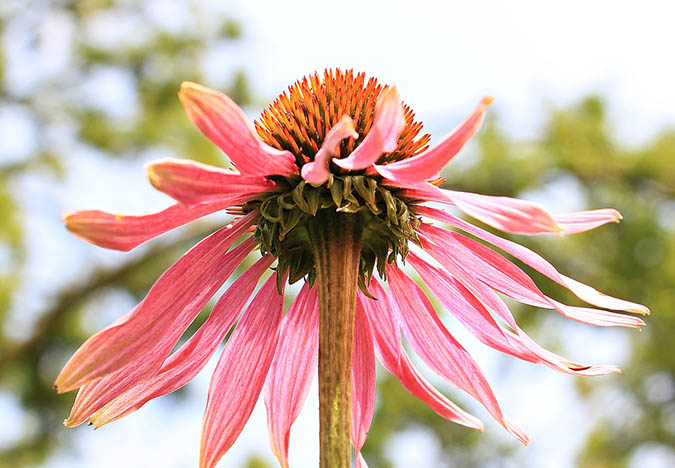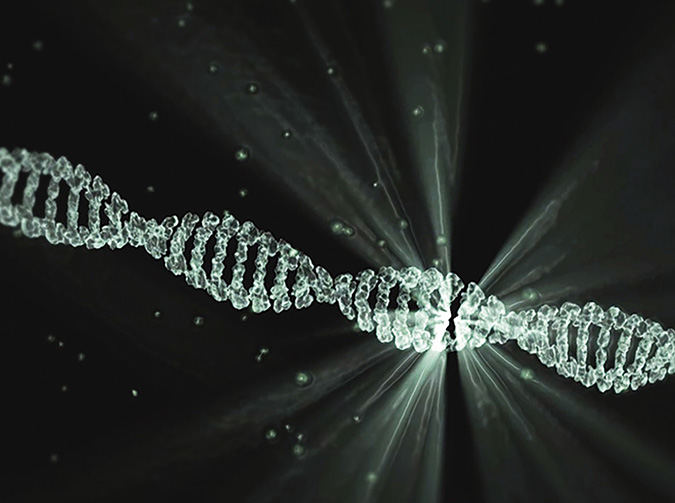An antiviral, antibacterial, and immune stimulant, the benefits of echinacea also include repairing soft tissue, joints, and even necrosis.

Image by S. Hermann & F. Richter from Pixabay
Healing Benefits of Echinacea
Echinacea has long been touted as an effective anti-inflammatory and immune stimulant, and for good reason—it is. Millions of echinacea capsules have been consumed by folks trying to ward off colds and flus. While the benefits of echinacea do, indeed, include stimulating the body to fight viral infections, in my clinical experience, echinacea is even more effective when facing a bacterial challenge.
I have used echinacea on all sorts of abscesses, on infected wounds, and even in cases of severe sepsis where the bacterial infection has actually entered the blood stream and become systemic throughout the body.
You May Also Enjoy:
“10 Incredibly Powerful Antiviral Herbs”
However, there is another side to the benefits of echinacea—a side that has saved many of my patients from disfiguring wounds or death from rattlesnake and venomous spider bites, and that makes echinacea a wonderful choice for the repair of torn cartilage and ligaments or other joint injuries. That property is echinacea’s ability to inhibit hyaluronidase and to actually stimulate hyaluronic acid production.
I know, big words. Hang with me for a minute—there’s nothing here that isn’t easily understood if we talk about it in regular English.
The Glue That Binds Us

Image by LaCasadeGoethe from Pixabay
Our bodies are made of individual cells. These cells are held together by a chemical called hyaluronic acid. So, if the cells are the bricks that your body is built of, hyaluronic acid is the mortar that holds them together.
You May Also Enjoy:
“40+ Natural Cold and Flu Remedies”
The venom of rattlesnakes (and their cousins) and hobo spiders contain an enzyme (hyaluronidase) that dissolves the hyaluronic acid that holds the cells together. The result is that when these animals bite, their venom actually liquefies tissue. This process causes terrible, disfiguring wounds and sometimes death.
There are also several species of bacteria that produce this same enzyme. The wounds infected with such organisms can become gangrenous, with massive tissue loss.
Fortunately, echinacea is able to prevent and even repair the damage of this process. The prevention comes in the form of a chemical contained in echinacea that inhibits the destructive enzyme from doing its work in the first place.
The repair is aided by one of the benefits of echinacea: it’s ability to stimulate the body to produce more hyaluronic acid (the mortar between the bricks) so that it has more material available to effect repairs.
Benefits of Echinacea for Repairing Your Body
Echinacea’s ability to increase hyaluronic acid production also makes it a great herb for cases of ligament, cartilage, or joint injury—or even arthritis. When we think about arthritis, we usually think about devil’s claw, white willow, yucca, frankincense, turmeric, and the other usual suspects. These herbs all have anti-inflammatory properties that diminish pain and reduce swelling.
Decreasing pain and swelling is great, but echinacea can take things one step further and actually help the body repair the damage.
Hyaluronic acid (the mortar between your bricks) is a major component in cartilage and synovial fluid (the fancy doctor word for “joint juice”). When joints are damaged either by injuries or by the inflammatory processes of arthritis, they need hyaluronic acid to effect repairs.
You May Also Enjoy:
“15 Natural Antibiotic Alternatives”
“Oatstraw Benefits: Stress Reliever, Love Potion, Brain Booster, and More”
Echinacea comes to the rescue by stimulating fibroblasts and chondroblasts (the cells that make cartilage) to make increased levels of hyaluronic acid … more mortar to hold the new bricks together so the body can rebuild.
So echinacea is a terrific herb not only for stimulating the immune system, killing bacteria, and reducing inflammation, but also for inhibiting the destruction of tissue by flesh-eating bacteria, venomous snakes in the pit viper family (rattlesnake, copperhead, and water moccasin), and hobo spiders.
Additional (but related) benefits of echinacea include its ability to help heal damaged joints, ligaments, and cartilage by stimulating production of exactly what damaged joints need to repair themselves.
Treating Spider Bites With Echinacea
I’ve also had great success treating hobo spider bites with this plant. This is among the more surprising benefits of echinacea.
The bite of the hobo is very painful and often causes serious necrosis. The necrosis isn’t caused by hyaluronidase in the hobo’s case, but rather by another mechanism. However, the result is the same: a nasty disfiguring wound.
I’ve had several occasions to treat hobo bites in humans and many presumed hobo bites in dogs (presumed because dogs will never tell me what the spider looked like). The results have been excellent.
You May Also Enjoy:
“Elderberry: Natural Remedy for Colds, the Flu, Inflammation … Even Cancer!”
Get TGN’s New Immunity Support Kit at an Incredible Discount
My own daughter was bitten by a hobo. She developed a dime-sized lesion with a nasty line encircling it. A physician told her, “I’m sorry, sweetheart, but you’re going to slough half your palm and there’s nothing I can do about it.” She drove home from college the same day to see Daddy the herbalist. I developed a formula (see below), applied it as a poultice, and poked it into her orally every 2 hours throughout the day, as well. Within 12 hours, the nasty ring was gone. In 24 hours, we couldn’t discern where the bite was by looking.
I don’t know if the echinacea neutralized the venom somehow as it does with snake bites, or if the increased hyaluronic acid production is helping. Could be that it’s another mechanism entirely. What I do know from clinical experience is that it works beautifully.
So, for chronic injuries, torn ligaments, sprains, tears, and arthritis, add a little echinacea to the mix. If you are bitten by a venomous snake or a hobo spider, get on some echinacea, as well.
My Formula for Snake and Spider Bites
- Echinacea
- Plantain
- Marshmallow
- Dandelion Root
- Saw Palmetto
I mix them in equal parts. I make a poultice to put on topically by mixing them with water. This I change every few hours. I also give the formula orally at a rate of about a tablespoon every 2 hours for an adult human. Dogs get a teaspoon.
You May Also Enjoy:
“How I Got A Venomous Snake Bite, Treated It At Home, and Lived To Tell The Tale”
Remember, too, that echinacea is a mild herb. Take it often … every 2 hours or so for acute conditions, 3 times a day for chronic injuries.
Alternatives to Echinacea

Rudbeckia hirta (black-eyed Susan)
If you don’t have access to echinacea and live in the Western United States, Rudbeckia hirta (black-eyed Susan) and Rudbeckia laciniata (yellow coneflower) are near cousins with similar medicinal properties. They grow wild throughout the West and in other parts of the country, as well.
 Rudbeckia laciniata (cutleaf coneflower)
Rudbeckia laciniata (cutleaf coneflower) What Do You Think?
Of the many benefits of echinacea, what’s your favorite one? How do you use it in your own herbal remedies? Let us know in the comments below!
___________________
This is an updated version of an article that was originally published on March 3, 2016. The author may not currently be available to respond to comments, however we encourage our Community members to chime in to share their experiences and answer questions!
The Grow Network is a participant in the Amazon Services LLC Associates Program, an affiliate program designed to provide a means for our team to earn fees for recommending our favorite products! We may earn a small commission, at no additional cost to you, should you purchase an item after clicking one of our links. Thanks for supporting TGN!
Dr. Patrick Jones is a practicing veterinarian. He owns and operates Fairview Animal Hospital in Buhl, ID. And he teaches herbal medicine skills online at homegrownherbalist.net.












COMMENTS(2)
When to pick echinacea. The images on this post show some mature echinacea. When is it considered ‘seedy’ which, mentioned elsewhere, can be slightly toxic. Are these mature flowers ok to pick and dry as well. I assume ay mention of echinacea that doesn’t say ‘root’ is just the flower.
Actually this article doesn’t say root, but I did think it was the echinacea root that one applies to snake bites. Can someone clarify?